Alexander the Great, We’ve Heard of Him! Vergina to Halkadiki (Χαλκιδική)
Dave the motorhome has a face full o’ sea, free-parked on a hard-standing at Agios Ioannis beach near Nikitas (N40.19160 E23.68982). We’re within flopping-distance of the Bay of Kassandra, Halkadiki, Northern Greece. We found this place through Adam and Sophie’s blog, www.europebycamper.com, as did our new neighbours who live in Madeira! It’s a magnificent place, and we plan to spend a couple of days here chilling out, and working out a route to and through Bulgaria.
Instead of the usual heat-based wake-up call as the sun grabs Dave and gives him a bear hug, this morning there was no sun, just cloud. Cockerels from the neighbouring back yard-cum-farm yard took up the slack, cock-a-doodling-doing us into action. Can’t complain, it was 8am! Thomas had told us that coaches would be here in this morning, giving us what should have been a heads-up to get going early, but it was 10am by the time we headed off, after breakfast, washing of pots, walking of dog and the like. Our French neighbours had already made the trip around the museum, ‘c’est tres interessant’.
A quick bit o’ history. Vergina as a modern town has only existed since 1922. Before that the land was owned by the Turks, being handed over to Greece which officially ended World War 1 (for everyone else it ended in 1918, but Turkey went from being the Ottoman Empire to being, erm, Turkey, and the new state refused to recognise the treaty signed at the earlier ‘end’ of WW1 by the Ottomans). Before that it had just been a couple of agricultural villages, a backwater. Now it’s still a backwater, miles from anything worth visiting (at least to the average tourist like us) but with a gem buried beneath it.
In 1977 (within our lifetime), a momentous find was made. Greek Archeologist Manolis Andronikos found the tomb of Philip II of Macedon, and just about wet himself with excitement. Who can blame him, the contents of what appears to be a small temple, buried beneath a huge mound with three other temples, were astounding. Since then the mound has been uncovered, and a carefully considered museum has been built within the mound which has now been covered back over.
As we arrived at the entrance to the museum we were in a hurry. A coach had made it past us and was offloading a horde of nippers! No need to rush, the teacher was already at the entrance and a million bar-coded tickets were being printed off. We waited to hand over our €8 apiece and looked around, not much to see to be honest:
With the nippers despatched each clutching their little white ticket, we legged it in front of them and down the steps into the mound, into the museum. Inside it was (a) dark, the lights just bright enough to see the floor (b) full of other folks, with much ‘SHSHSHHHHHHHSHSing’ going on (c) awash with plain-clothes fun police making sure no photos were taken and (d) quite a fabulous experience. The lighting on the pieces was perfect, and despite the crowds of fellow tomb raiders, atmospheric. The tombs are still in place, the two worth preserving most are behind thick glass walls, in a protective atmosphere, which you can’t enter. The contents have been brought out though, and are quite amazing, in the sense you can’t quite believe you’re looking at this stuff, almost within reach.
The story of King Philip II is, in short, that he became King of an ailing Macedon in 359BC, and the state was weak and besieged. Within his lifetime he’d used war and tact to strengthen and expand his Kingdom, setting the scene for one of his sons, one Alexander the Great, to conquer the whole of the ‘known world’. Philip’s life was ended by, if you believe the story, one of his many lovers, this one a young man/boy who he’d since spurned, murdered him in a fit of rage. There’s no mention of this in the museum!
Ancient Macedon fell almost completely within modern Greece, and one of the finds from the museum was a golden box containing Philip’s bones. It’s topped off with an ‘exploding sun’ motif, exactly the same as this one, which was Former Yugoslav Republic of Macedonia’s flag until huge Greek and international pressure made them change it.
All the Greek Macedonia versus Former Yugoslav Republic of Macedonia stand-off is pretty much indecipherable to me. I had a go at reading the Wikipedia article on it and gave up. Like the stories written in Balkan Ghosts, and like the reading we did when in Slovenia, Croatia and Bosnia, the Balkans are a mish-mash of ethnicities, age-old vendettas, religious tensions and border disputes. It’s nigh-on impossible for anyone outside the region to get their head around, well, that’s my excuse.
Back to the museum. When Philip was murdered, Alexander threw one massive funeral party. His body was burned along with various gold and other artefacts, before his bones were washed in wine, wrapped in gold and purple cloth and popped in a gold box where they’d stay for a couple of thousand years. The box went in the tomb, with gold armour, ivory and glass trinkets and carvings, iron swords, shields and an array of other things. They’re all on display, they’re all eye catching, even the pot stuff which I can’t usually abide staring at. There are a few photos below, taken from Wikipedia since the fun police were just too good to let us sneak off a few shots.
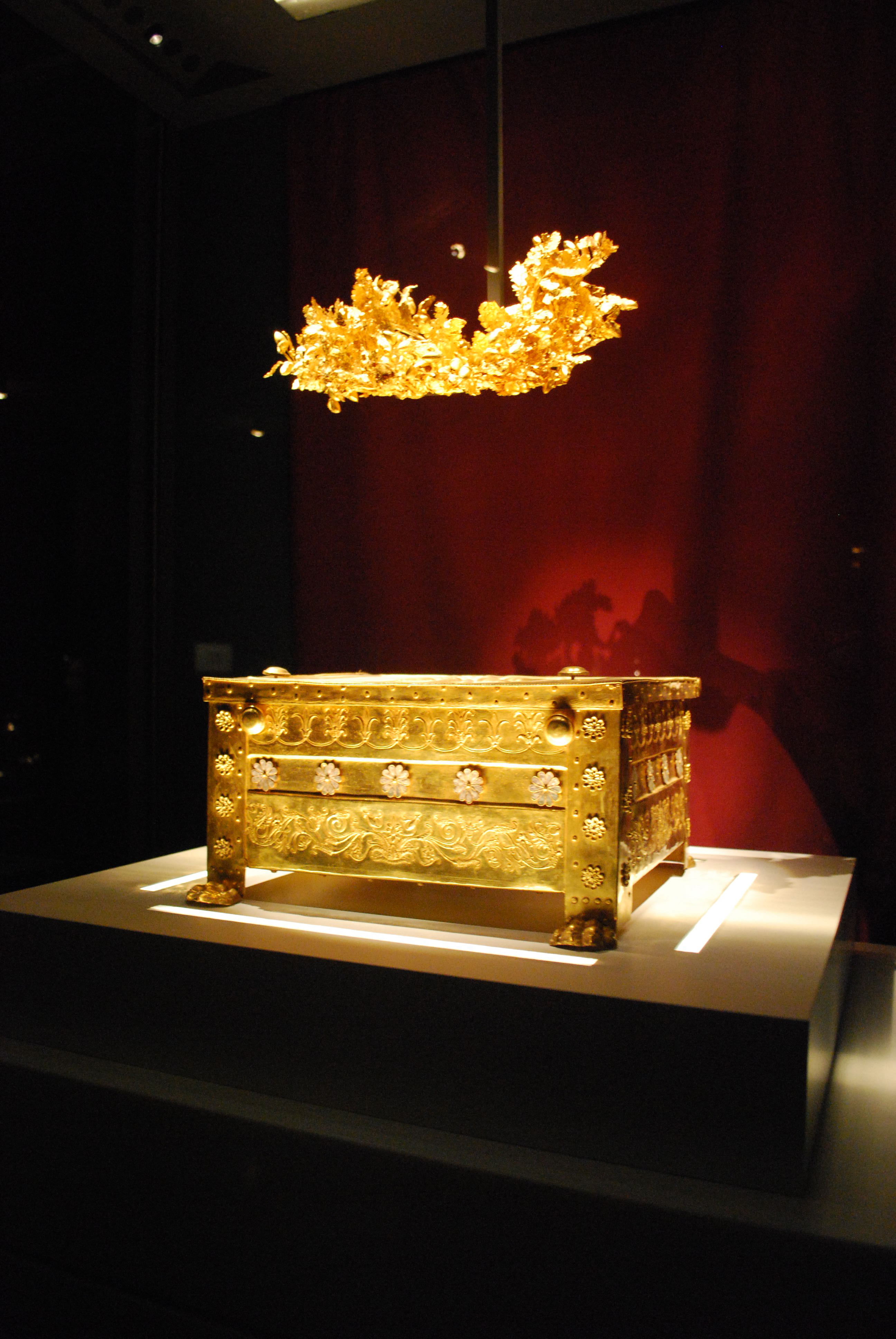
Box ‘o bones. Above it is an incredible gold oak-leaf head thing. It was supposed to have been worn while the body burned, but seems too perfect for that?
Stepping back out into the light, we walked back through the drab town, avoiding the stares and glares of fruit and tat-shop sellers from the other side of the road, and bypassing the museum tat shop too. Philip was supposed to have been killed at a wedding at the theatre a short distance away, and we fancied finding it to stand and imagine. Walking along the edge of the town we first spotted these guys:
As soon as my finger bounced up off the camera trigger, there came a shout. ‘No! No photos!’. I’ll be honest, I’m fed up with the no-photos stuff. I just don’t get why not, the rules vary between Greek museums and even between floors of the same museum, some churches allow it, others don’t. In some museums photos without flash are OK, but video is forbidden. Now I’m being giving a rollicking for taking a photo of a pile of stones, which I could come back and photo once they’ve gone home as there’s just a rusting chest high fence in the way. I know, I know, they perhaps just want to protect their privacy, but I threw my hands up like a kid. ‘Why not?’. ‘No photos!’. ‘Why?’ They then ignored me and went back to doing whatever private stuff they were doing out in the open.
Needled, I was expecting a proper telling off at the next photo op. Again outdoor, there’s a temple which is being excavated under the cover of a steel roof. I snapped a shot when a chap appeared on the other side of the fence. Ju said hello, and he called us over. Here we go. Nah, turned out he was a ‘restorer’ rather than an archaeologist, and was working with a small team of guys on getting the temple, ah, restored? He obviously loved what he did with a passion, but spoke with a sad, frustrated tinge to his voice. He explained the steel sheets which we’d seen laid on the ground in maybe ten or fifteen places cover the sites of tombs and other ancient parts of the city still waiting for excavation, including some found just this year. One, he pointed off to one side, was more magnificent than the one they were working on, but was ‘dangerous to the health’ to work on. ‘Maybe we come back in ten years’ said Ju, ‘perhaps’ he replied, ‘or maybe longer’, and then apologised as he had to leave, his co-workers were waiting to go for lunch.
We didn’t get his name, but he’d also pointed out where the theatre and a palace were up the road. He told us we couldn’t get to them, but we went anyway and found that he meant we couldn’t get inside, but could see over the fence.
I didn’t know whether to feel a little depressed at the state of Greek finances that this great city, which they felt so strongly about when confronting Macedonia, has received so little on-the-ground money to develop it, or to feel elated that we were probably walking on treasure awaiting discovery. For now at least, King Philip’s city looks like this, fields:
Done with Vergina, and with the rain starting to fall, we topped up our water tank (trying not to breathe in eau-de-cockerel from over the fence) and left. Today, we took the motorway, the Egnatia Odos, also known as the A2. It’s basically a dual carriageway, and if you fancy the 420 miles drive, you can use it to get right across from the Adriatic coast to Turkey. We only needed an hour to get to the Thessaloniki end, for a grand total of €3. It seems that most Greek toll roads are pretty cheap, except the A5, which charges a small fortune.
Driving the motorway was sweet! Driving Dave around mountain passes is hard work (not in the 75 hours-a-week sense), and gives me a vicious pain in the back after a few hours. It’s the combination of tight corners, a million gear changes, nursing brakes in long descents, squeezing elbows in as lorries pass, edging over to allow overtakers to get past and wondering if some idiot (the last time the local roaring red Unimog fire engine) is going to round the next bend well onto your side of the road and kill you. The motorway on the other hand was dead, we chilled and the miles of countryside passed.
We would have visited Thessalonika, but our research turned up zero places to stay anywhere near the city, no guarded car parks, no campsites with a train link in, nowt. Another one to come back to then, we turned off onto the ring road and bypassed the sprawl. A chap at the lights trying to sell bananas gave us a laugh, pretending to charge Charlie who went bonkers at him through the glass. Other lights-dwellers handed out leaflets and washed windscreens. Thessalonika’s not exactly rich, at least from the distant view we got at 50mph.
Out the other side and within half an hour we were back in countryside. We pulled into a lay-by and had a Skype session with Ju’s brother from his office in Nottingham, reminding us that we miss our family and some people have work to do! The Internet is making this kind of travel a different experience though, one in which we can still connect, still see loved ones while we’re away, and give some impression of what we’re experiencing through this blog.
As Murray went back to earning a living, we went back to driving south through Halkadiki. Enormous, motorway gantry-sized signs appeared in Greek and English: ‘No Free Camping’. Huh? We assumed they were only enforced if you picked the wrong spot, and it seems we were right. Finding this place, we bounced across the dirt track between the trees and parked up looking out over the sea. An incredible place. A neighbour came to say hello, Connie, from Brazil. They were here for 45 days last year. The police come to look around but don’t enforce the law.
Connie had come to tell us last night’s lightning storm set fire to trees the other side of the bay here, bringing out aircraft to douse the flames. The wind had taken the beach bar’s umbrellas and dumped them all in the sea, and the bar owner who they’re friends with said the weather will stay bad for a week. We’d parked on a small cliff, maybe we’d be better off being a bit lower down she suggested. Good advice, we’re parked up next to those guys and Ju’s already accepted an invitation for a grill and Scrabble session with them for tomorrow night!
Only one more thing to report: octopus. I’ve been looking for one for years and he’s here! Only small, maybe 30cm end-to-end, but magnificent nevertheless and once I caught him out in the open (snorkelling) he held still so I could dive down and get some good close-up looks as is eyes kept close track of me. More fun in the water tomorrow, for now, beer.
Cheers, Jay

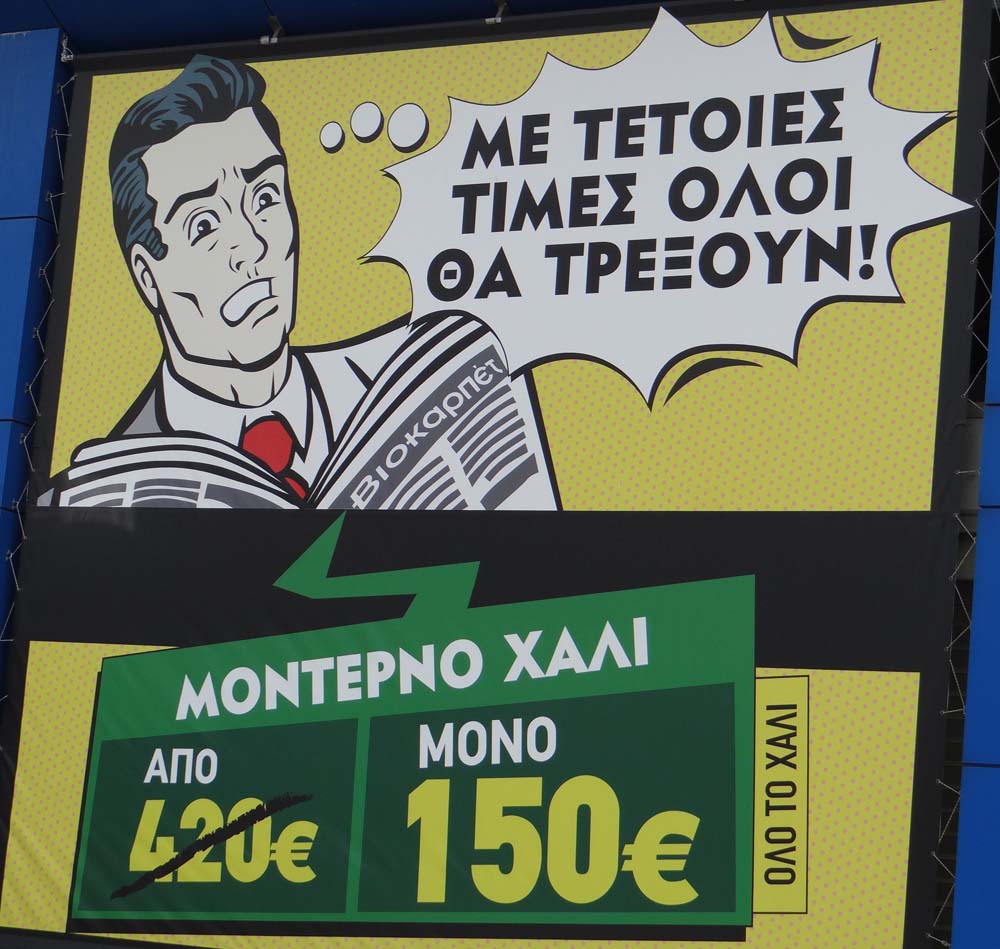
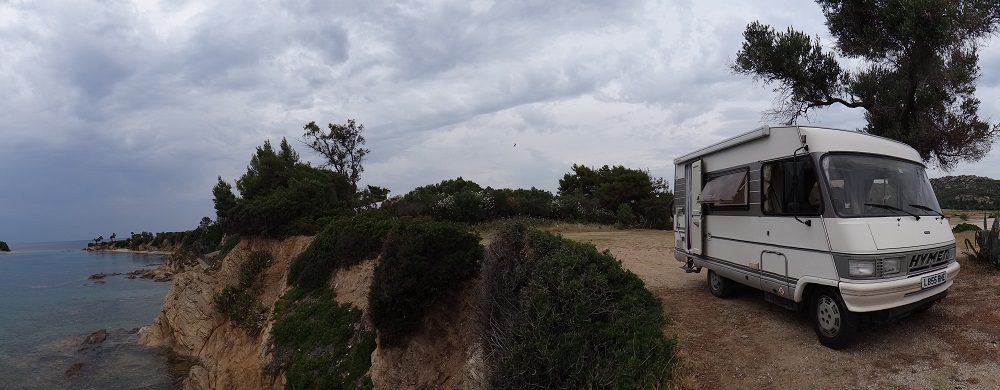
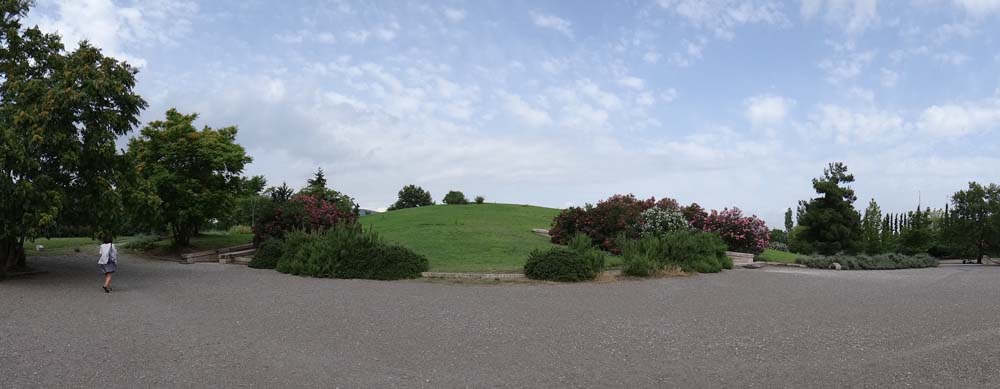
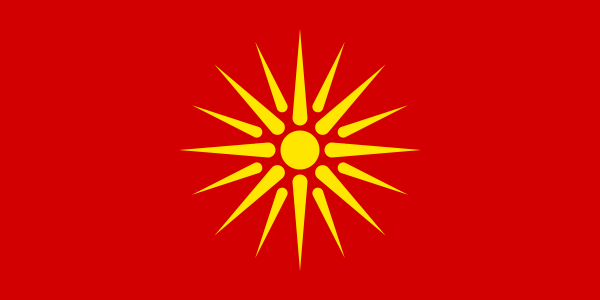

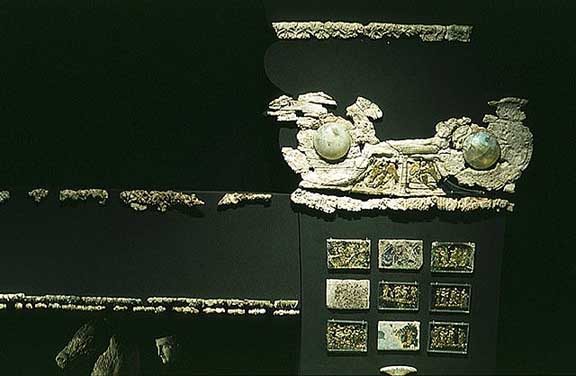
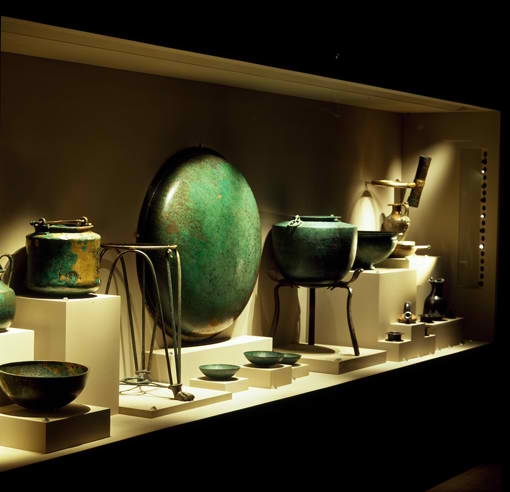
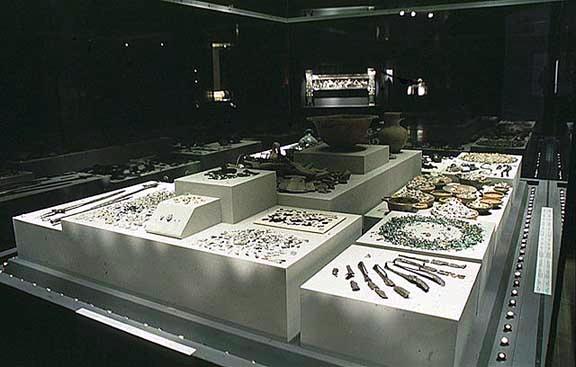
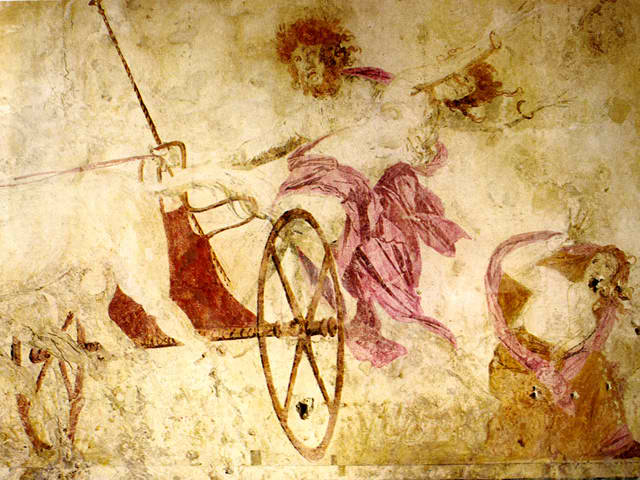
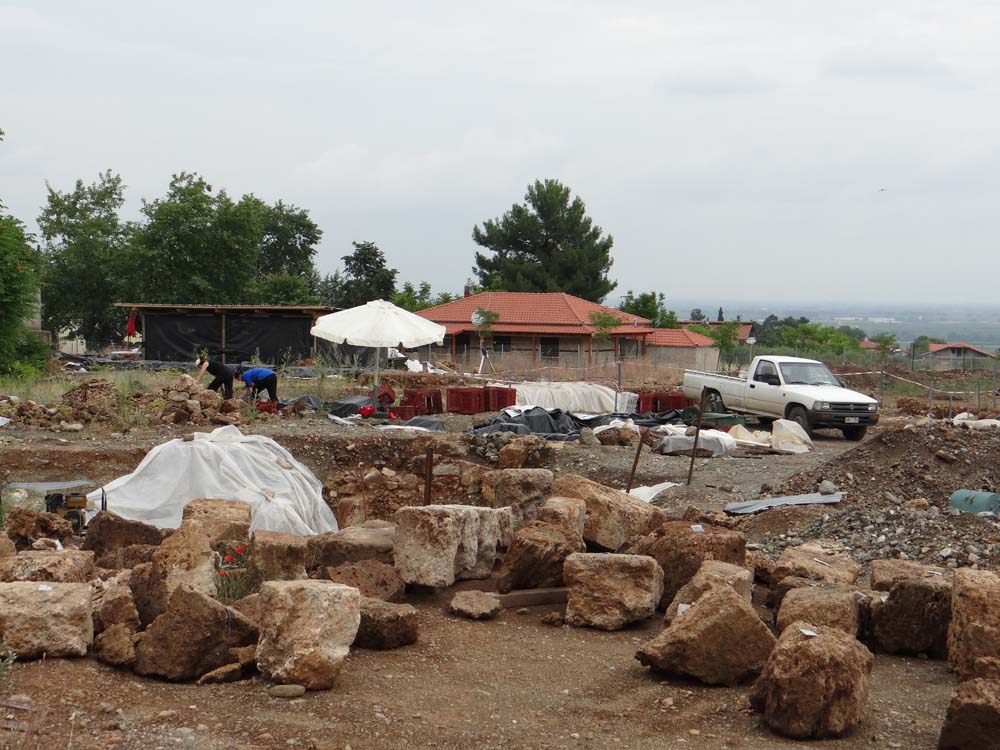
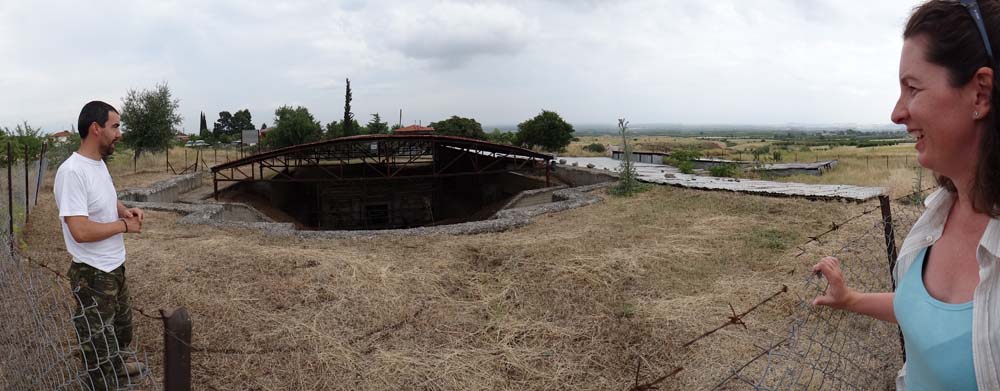
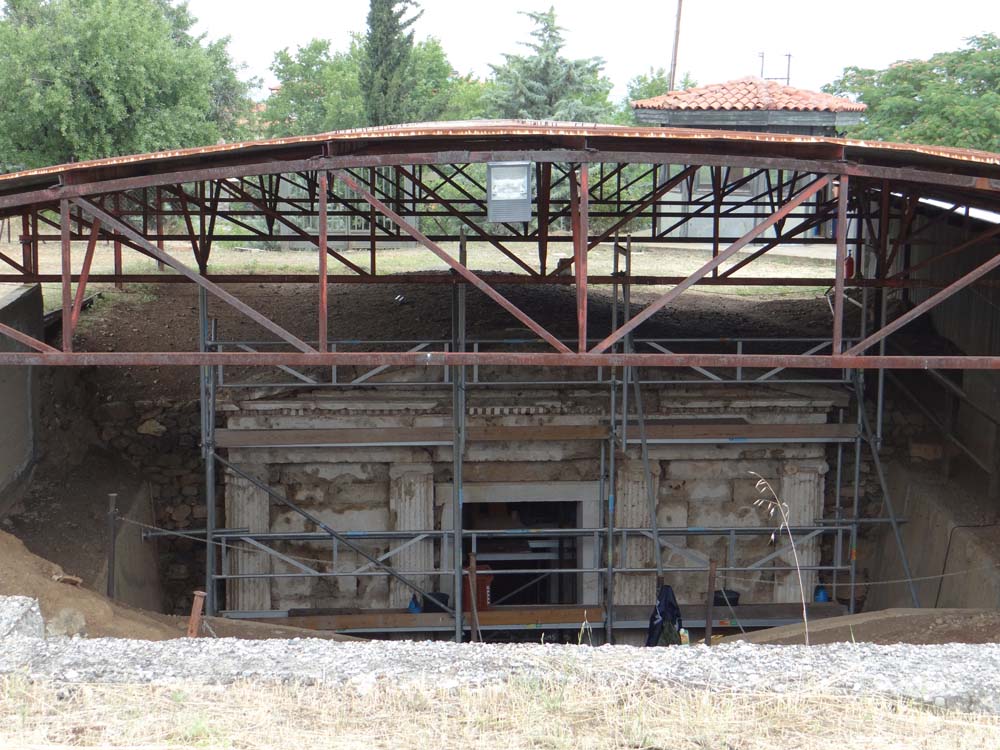
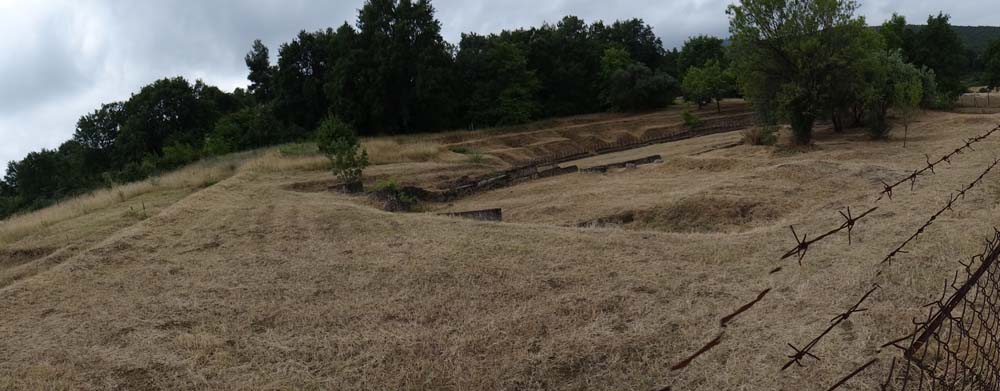
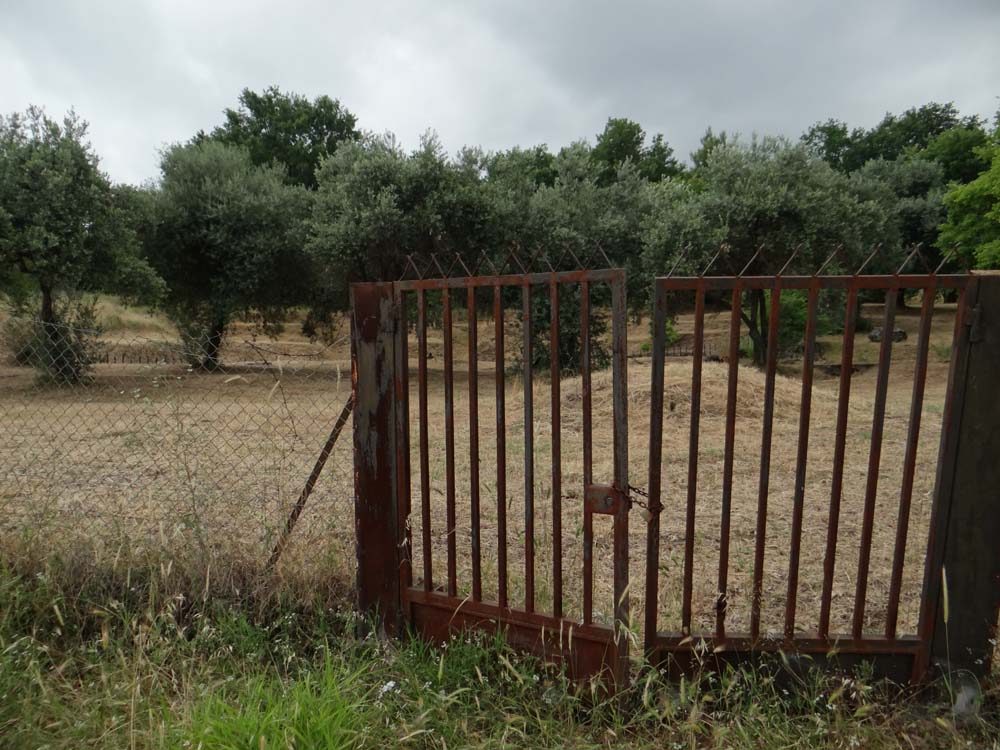
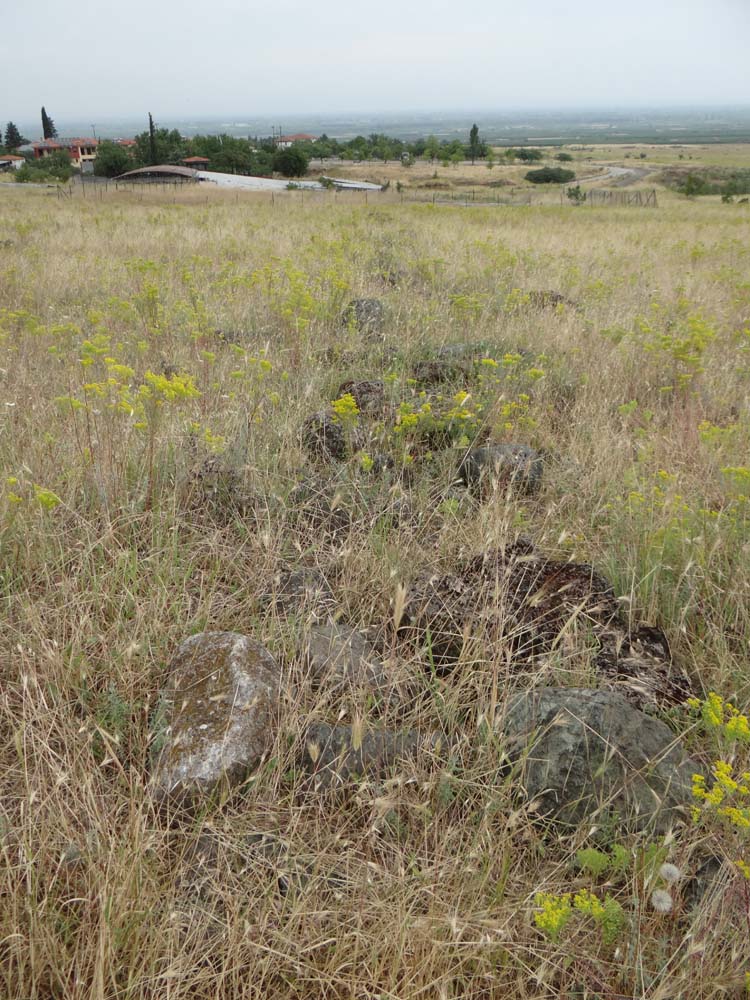
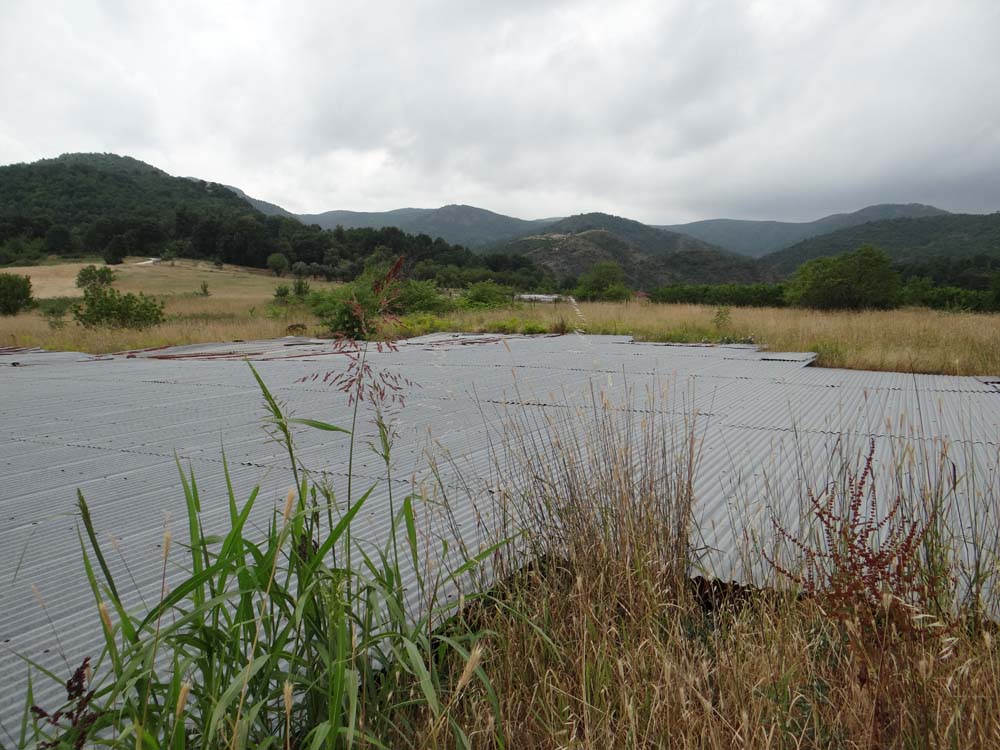

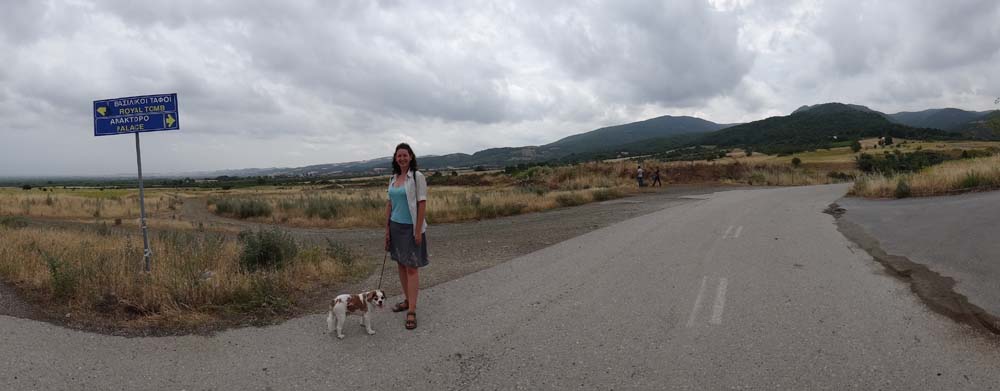
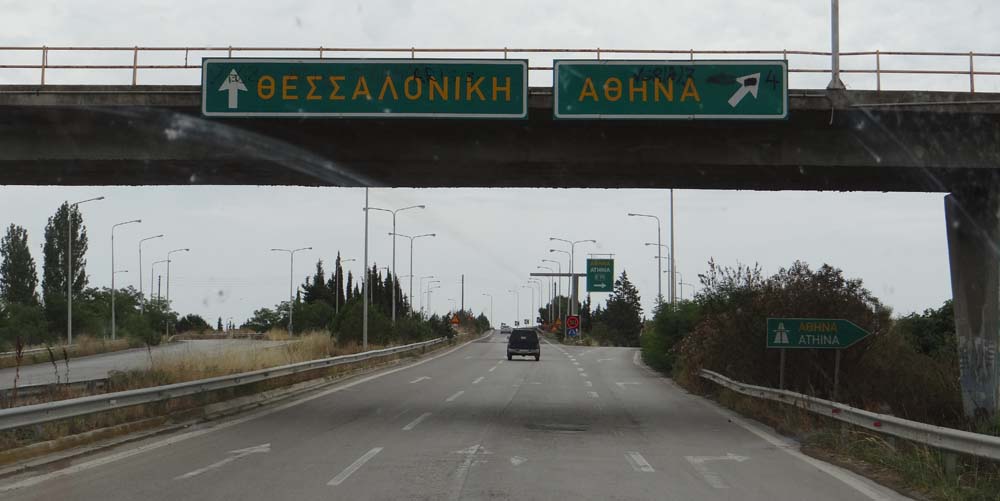
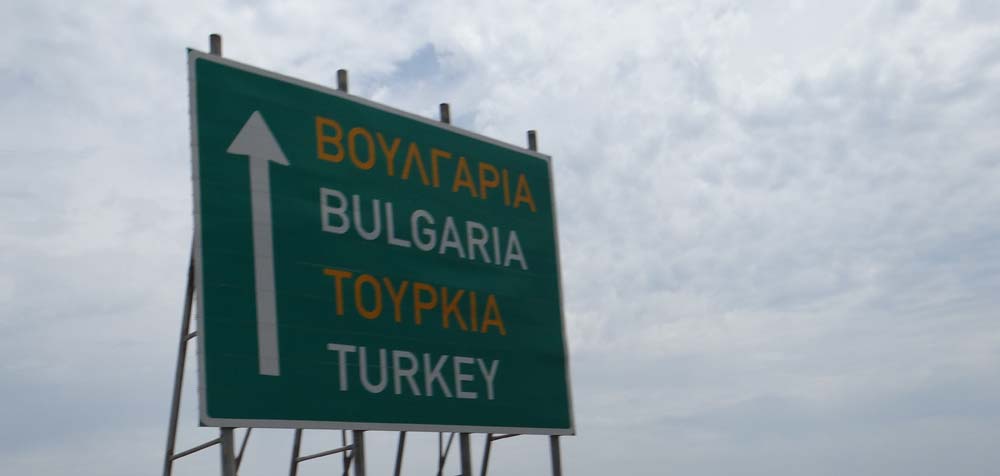
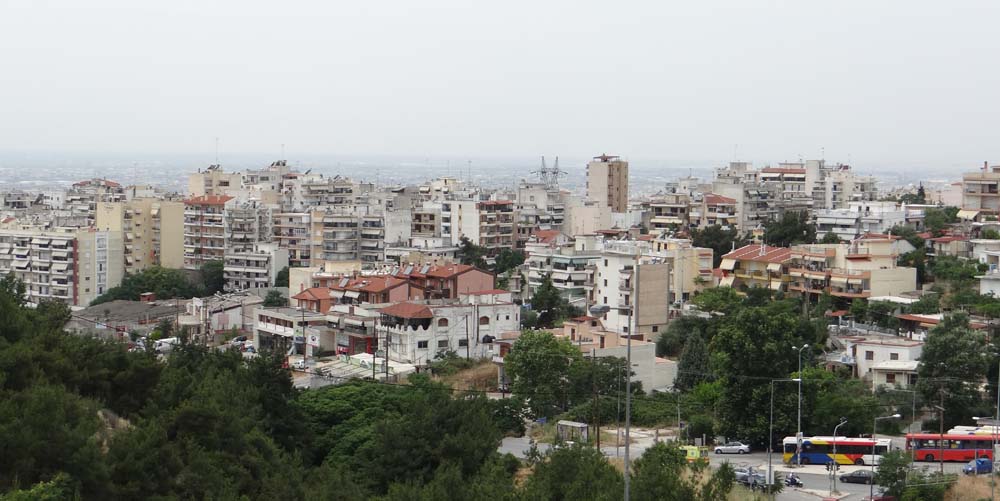
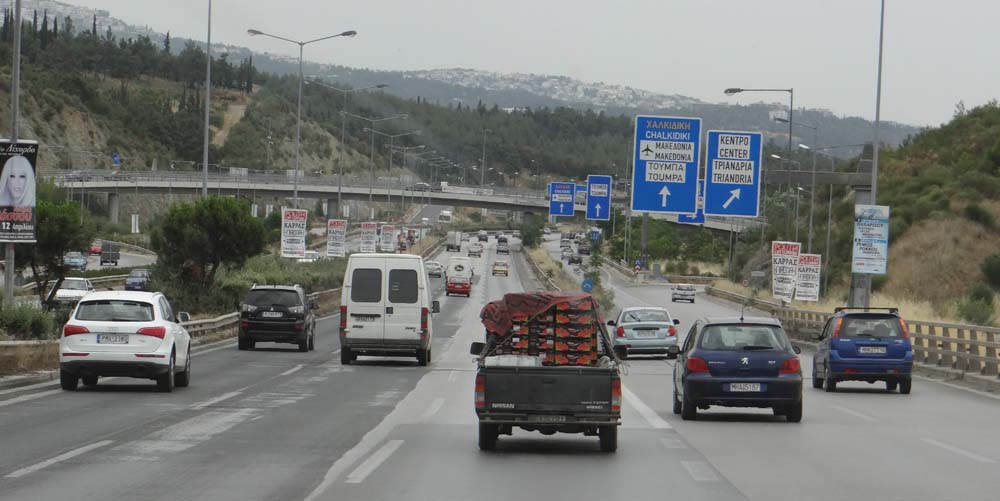
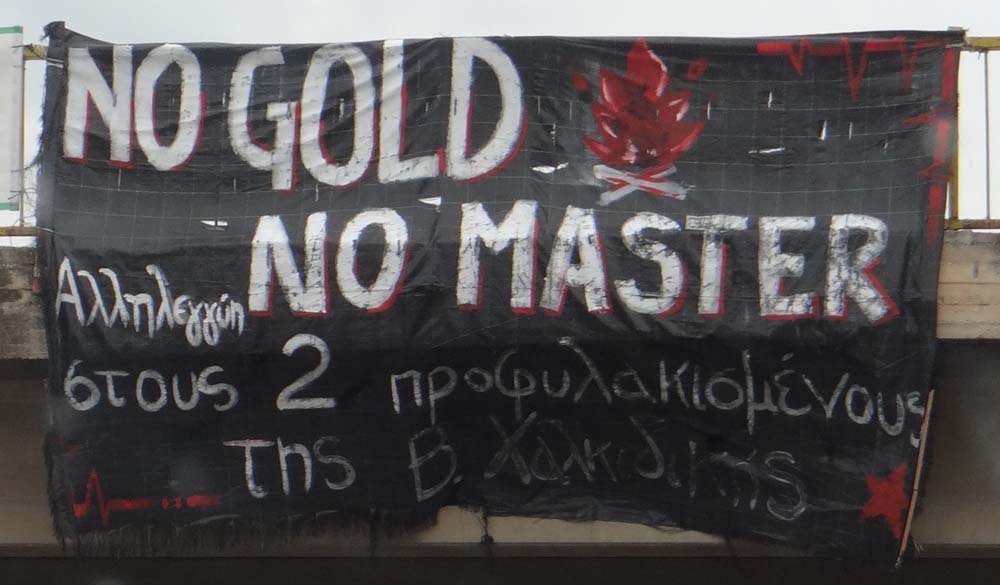
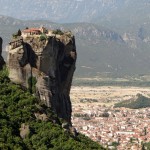
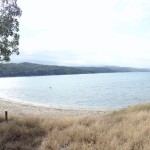
What a great story! Enjoyed the excavation photos!
Thanks Elizabeth, had a risk a minor knuckle-whacking to get those pics! Cheers, Jay
andy and jan from the wirral here,are you still on the road.my wife and i have just bought our motorhome in order to leave the rat race for a while.
Hi guys – great to hear from you. If it’s not obvious from the blog, we thoroughly enjoyed our time on the road. If it’s your first time wandering, and fancy going to Europe, France and Germany are by far the easiest countries to travel through in a motorhome. Use the aires and stellplatz if you want to save some money, we found them to be (on the whole) really good. Have a wonderful time, and feel free to drop us an email at julieandjason@ourtour.co.uk if there are any questions we might be able to answer. Cheers, Jason